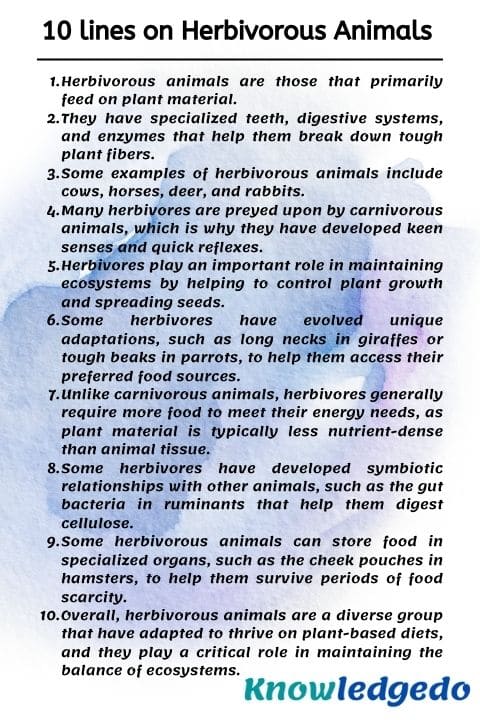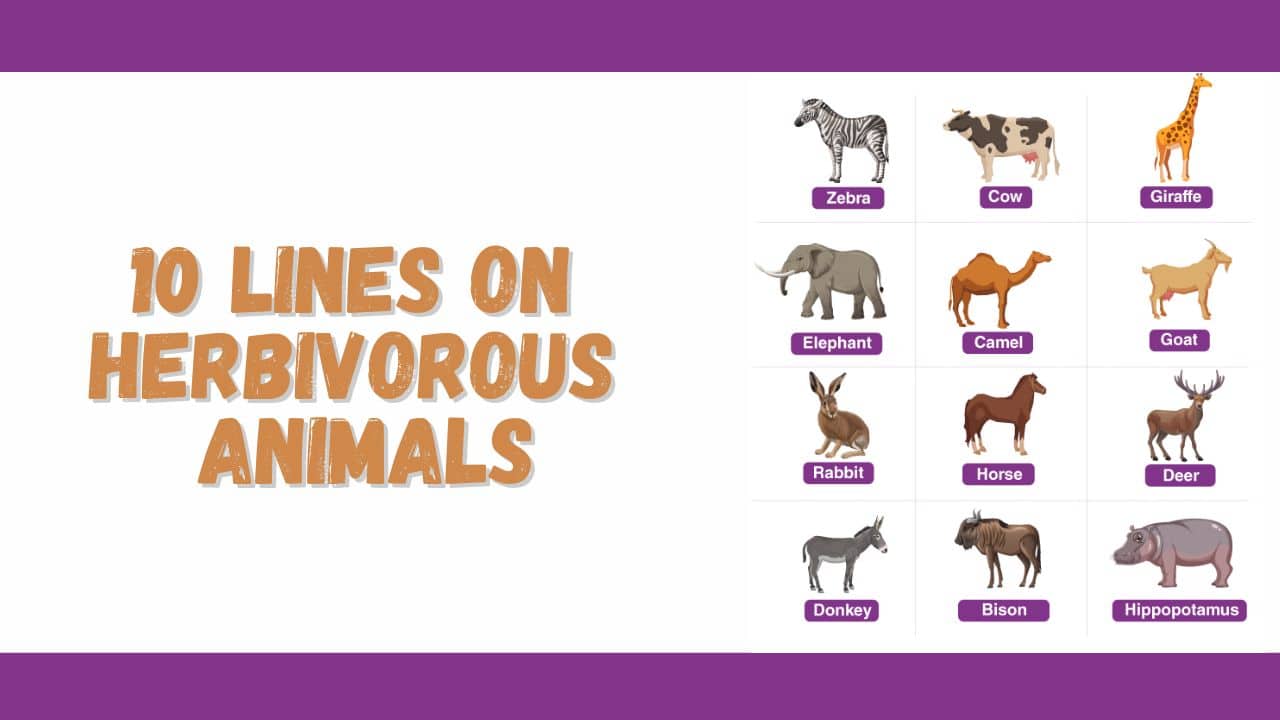Today, we are sharing 10 lines on Herbivorous Animals in English. This article can help students who are looking for information about 10 lines on Herbivorous Animals. This Lines is very simple and easy to remember. The level of these Lines is moderate so any student can write on this topic.
This article is generally useful for class 1,class 2,class 3,class 4,class 5,class 6,class 7,class 8,class 9,class 10,class 11,class 12
10 lines on herbivorous animals
1) Herbivorous animals are those that primarily feed on plant material.
2) They have specialized teeth, digestive systems, and enzymes that help them break down tough plant fibres.
3) Some examples of herbivorous animals include cows, horses, deer, and rabbits.
4) Many herbivores are preyed upon by carnivorous animals, which is why they have developed keen senses and quick reflexes.
5) Herbivores play an important role in maintaining ecosystems by helping to control plant growth and spreading seeds.
6) Some herbivores have evolved unique adaptations, such as long necks in giraffes or tough beaks in parrots, to help them access their preferred food sources.
7) Unlike carnivorous animals, herbivores generally require more food to meet their energy needs, as plant material is typically less nutrient-dense than animal tissue.
8) Some herbivores have developed symbiotic relationships with other animals, such as the gut bacteria in ruminants that help them digest cellulose.
9) Some herbivorous animals can store food in specialized organs, such as the cheek pouches in hamsters, to help them survive periods of food scarcity.
10) Overall, herbivorous animals are a diverse group that have adapted to thrive on plant-based diets, and they play a critical role in maintaining the balance of ecosystems.

5 lines on herbivorous animals
1) Herbivorous animals are those that consume primarily plant-based diets.
2) They have evolved specialized digestive systems and teeth to break down tough plant material.
3) Examples of herbivorous animals include cows, deer, rabbits, and many species of primates.
4) Herbivorous animals are a critical component of ecosystems, as they help to control plant growth and spread seeds.
5) Many herbivores are preyed upon by carnivorous animals and have developed adaptations to avoid predation, such as camouflage or speed.
FAQ
Answer: Herbivorous animals eat a wide range of plant material, including leaves, stems, roots, fruits, and seeds. Some species have more specific dietary requirements and may only consume certain types of plants.
Answer: Herbivorous animals have specialized digestive systems that allow them to break down and extract nutrients from plant material. Some species, such as ruminants like cows and sheep, have multiple stomach chambers and rely on microorganisms in their digestive system to help break down tough plant fibres.
Answer: Yes, herbivorous animals have evolved to thrive on plant-based diets and can meet all of their nutritional needs by consuming plants. However, some species may require specific types of plants or supplements to ensure they receive all the necessary nutrients.
Answer: Some herbivorous animals, particularly those in captivity or with access to abundant food sources, may be at risk of overeating and becoming obese. However, in the wild, herbivores typically regulate their intake based on nutrient availability and their own internal cues.
